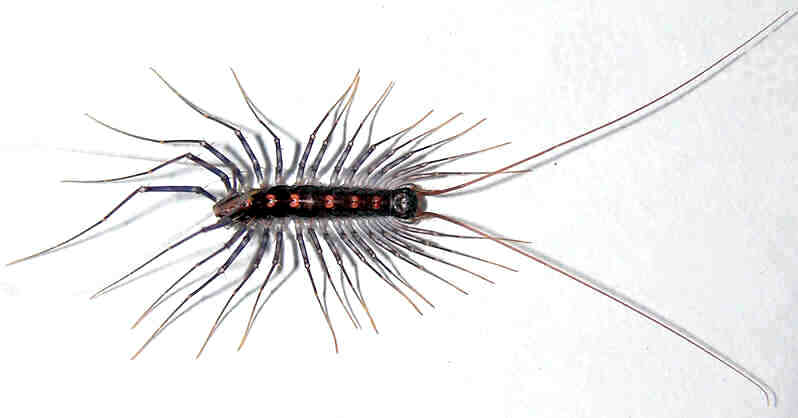| The Myriapoda (Millipedes, Centipedes) Featuring the North American Fauna |
|
| ||

Sphendononema guildingii
(Newport, 1845) (Chilopoda: Scutigeromorpha: Pselliodidae), a common
centipede in Central & South America and on Caribbean
Islands. |
The Myriapods, the World’s Leggiest Animals Rowland M. Shelley, Ph. D.; North Carolina State Museum of Natural Sciences Introduction The myriapods comprise four classes of multi-legged arthropods with at least 18 legs (9 pairs) in adults. Two of the classes, the Diplopoda (millipedes) and Chilopoda (centipedes), include primarily relatively large-bodied, macroscopic organisms that are readily seen by the general public and are addressed in this website. The other two classes, Symphyla and Pauropoda, lack common names and are microscopic organisms that are at most only a few mm in length; they are not covered here. The Diplopoda and Chilopoda are ecologically important classes that occur throughout the temperate and tropical zones of the world and have been unintentionally introduced by man onto most oceanic islands. They are major components of terrestrial ecosystems including even xeric (desert) environments, yet they are poorly known and have been relatively ignored by past and present biologists. Despite this
inattention by professional biologists, myriapods attract
considerable interest from the general public on all continents.
Amateur chat lines exist on the Web; large-bodied millipedes &
centipedes are imported from tropical regions of Asia, Africa, and
South America and sold in pet stores throughout the US; and a
substantial number of people engage in husbandry. If one searches
for millipedes or centipedes on a search engine, a host of websites
turn up, but much of the information on them is inaccurate or
incomplete. A need exists for a professionally run website with
factually accurate information that is retrievable by search
engines, and this site is designed to fill this void.
|